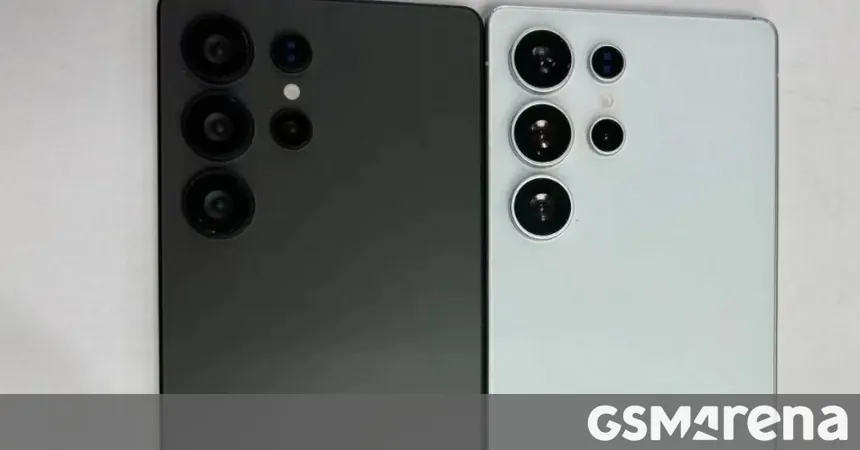
Groundbreaking Discovery: Tracking Criminals Using Microbes Instead of DNA!
2024-11-18
Author: Amelia
Groundbreaking Discovery: Tracking Criminals Using Microbes Instead of DNA!
In a remarkable breakthrough that could revolutionize forensic science, researchers have unveiled a cutting-edge AI tool that can identify criminals through their unique microbial signatures—without resorting to DNA or fingerprints. Led by Professor Eran Elhaik, the development of the Microbiome Geographic Population Structure (mGPS) promises to change the landscape of criminal investigations.
The Role of Microbes in Forensics
As the world becomes more focused on cleanliness, particularly in the wake of the COVID-19 pandemic, we must realize that bacteria are not just our foes; they can also be powerful allies. The human microbiome, a complex collection of microorganisms that inhabit our bodies and surroundings, can leave distinct traces of where a person has been. Unlike DNA, which can be wiped clean, microbial evidence remains embedded in the environment, offering an unparalleled opportunity for crime scene investigators to uncover the whereabouts of suspects.
How Does mGPS Work?
Imagine a GPS that not only directs you home but can also pinpoint where microorganisms originated from! That's precisely what mGPS does. This innovative AI system analyzes microbial communities collected from various surfaces like cell phones, skin, soil, and even within bodies of water. By leveraging extensive datasets—gathered from transit systems, environmental samples, and groundbreaking projects like MetaSUB—the AI learns to associate specific microbial patterns with geographic locations.
Through advanced machine learning algorithms, mGPS can predict the geographic origins of microbial samples with impressive accuracy. For example, studies have shown mGPS achieves 92% accuracy in identifying the source city of urban samples, and it even differentiates between closely located sites, such as different subway stations within Hong Kong.
The Future of Crime Scene Investigation
The implications for law enforcement are staggering. Just as criminals often try to manipulate DNA evidence, the potential exists for them to tamper with microbial evidence, but this strategy is far trickier. Bacteria present on hand-held objects will have signatures from multiple individuals, making it more challenging to fake, according to Professor Elhaik.
Currently, the method for forensic evidence collection falls short, often relying on small datasets that can't fully capture the complexity of microbial data. However, Elhaik and his team foresee a world where mGPS becomes integral to crime-solving, enhancing the accuracy with which law enforcement can track criminal behavior based on environmental interactions.
A Multi-Disciplinary Approach
Elhaik emphasizes the interdisciplinary nature of this research, combining biology, statistics, and computer science. While AI significantly enhances the capabilities of mGPS, human oversight and understanding remain vital to interpreting the results accurately. Factors that may influence microbiome composition—such as cleaning regimens and human migration—must be managed carefully.
Timeline for Implementation
While the potential of mGPS is enormous, it may take another 6-7 years of further development and validation before its wide-scale application in law enforcement is realized. However, Elhaik's insights provide a glimpse into a future where microbial evidence becomes a game-changer in forensic investigations.
Conclusion: A Game-Changer in Tracking Criminals
Imagine a world where police can trace the origins of a suspect’s presence at a crime scene through a simple analysis of bacteria—a field that’s as complex as it is promising. With mGPS on the horizon, the future of forensic science looks not just cleaner, but more precise. Keep watching, as this technology could soon rewrite the rulebook on crime detection!
Stay tuned for updates on this groundbreaking research as it continues to evolve in the years to come!









 Brasil (PT)
Brasil (PT)
 Canada (EN)
Canada (EN)
 Chile (ES)
Chile (ES)
 España (ES)
España (ES)
 France (FR)
France (FR)
 Hong Kong (EN)
Hong Kong (EN)
 Italia (IT)
Italia (IT)
 日本 (JA)
日本 (JA)
 Magyarország (HU)
Magyarország (HU)
 Norge (NO)
Norge (NO)
 Polska (PL)
Polska (PL)
 Schweiz (DE)
Schweiz (DE)
 Singapore (EN)
Singapore (EN)
 Sverige (SV)
Sverige (SV)
 Suomi (FI)
Suomi (FI)
 Türkiye (TR)
Türkiye (TR)